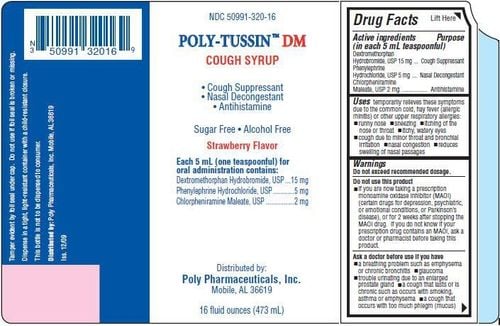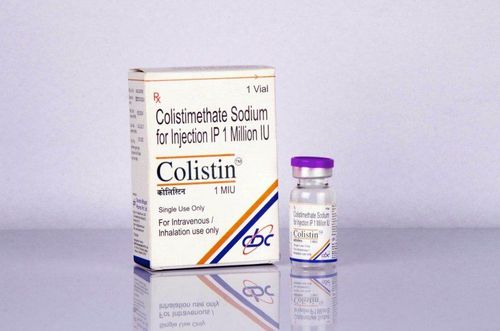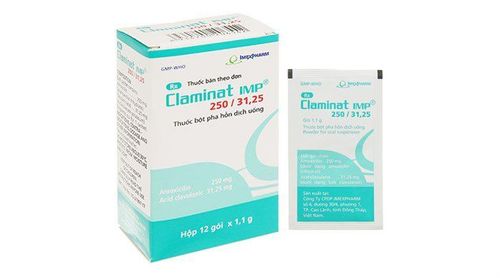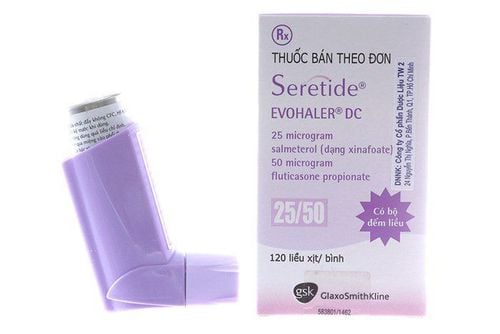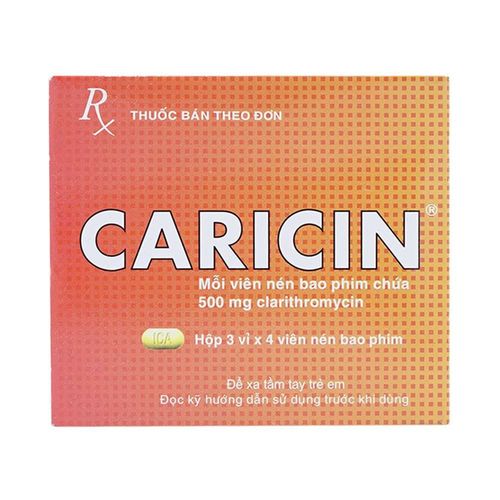This is an automatically translated article.
Azihasan is a drug belonging to the group of antibiotics, bactericidal used in cases of bacterial infections. This is a broad-spectrum antibiotic that is active against a wide range of bacteria, both gram-negative and gram-positive.
1. Uses of Azihasan 250
Azihasan 250 medicine has the main ingredient is Azithromycin 250mg, prepared in the form of hard capsules. In addition, the drug is also prepared in another strength, Azihasan 125 contains 125mg of Azithromycin, this type is prepared in the form of a powder package.
Azithromycin is a semi-synthetic antibiotic belonging to the group of macrolide antibiotics. Although it belongs to the same class of drugs, it differs from erythromycin by having an additional nitrogen atom substituted for a methyl group on the lactone ring.
The effect of Azihasan 250 is a strong bactericide by binding to the ribosomes of pathogenic bacteria, thereby helping to prevent their protein synthesis. However, the drug has also been reported to have cross-resistance with erythromycin, so careful consideration should be taken when using the drug before using azithromycin, because bacteria resistant to macrolides in Vietnam have spread quite widely. wide. Azithromycin is mainly active against Gram-positive bacteria such as Streptococcus (Streptococcus), Pneumococcus, Staphylococcus aureus (staphylococci). Some other strains of bacteria may also be sensitive to the antibiotic azithromycin, such as: Corynebacterium diphtheriae, Clostridium perfringens, Peptostreptococcus, Propionibacterium acnes.
In addition, the antibiotic Azithromycin also has a good effect on some Gram-negative bacteria such as: Haemophilus influenzae, parainfluenzae... Looking at the overall effect of the drug, the effect of azithromycin on Gram-positive bacteria is weaker than that of erythromycin. , but stronger in some Gram-negative bacteria. An advantage over erythromycin of Azithromycin is that it has a long duration of action, so it is usually only necessary to take the drug once a day, thereby limiting the possibility of forgetting to take the drug.
2. Indications and contraindications of the drug Azihasan
Azihasan is indicated in a number of cases, including:
Lower respiratory tract infections such as acute bronchitis, pneumonia. Upper respiratory tract infections such as rhinosinusitis, pharyngitis, tonsillitis and otitis media. Infections of the skin and soft tissues such as boils, pustules, etc. A sexually transmitted disease for both men and women caused by the bacteria Chlamydia trachomatis or Neisseria gonorrhoeae. Do not use Azihasan in the following cases:
Hypersensitivity to the active ingredient azithromycin or other antibiotics of the macrolide group. People with manifestations of resistance to macrolides. Adjust dose in patients with renal failure with creatinine clearance less than 40 mL/min, use with caution in patients with hepatic impairment, should not be used in children under 6 months of age.
3. Dosage and how to use Azihasan
How to use: Depending on the dosage form, the way to use it is different. For drugs that are prepared in the form of tablets, they should be taken with water. For powder form, mix with water and drink. Note that because food can reduce the absorption of the drug, azithromycin should not be taken with food. Should be taken 1 hour before meals or 2 hours after meals.
Dosage:
Adults:
Treatment of sexually transmitted diseases such as cervicitis, urethritis caused by Chlamydia trachomatis infection, Neisseria gonorrhoeae used with a single dose of 1g. Diseases such as respiratory infections such as bronchitis, pneumonia, pharyngitis, skin and soft tissue infections: The first day take a dose of 500mg (two tablets of Azihasan 250mg) and the next 4 days with a single dose of 250mg /day. Children: Dose on the first day of 10 mg/kg body weight and then 5 mg/kg body weight daily, once daily for 5 days or 10 mg/kg/day consecutively for within 3 days.
Children under 6 months: There is no information on the efficacy and safety of azihasan when used in children under 6 months of age; therefore it is not currently recommended for use in children in this age group.
Elderly people, patients with renal or mild liver impairment do not need to adjust the dose.
4. Side effects when taking Azihasan
Some possible side effects when taking Azihasan include:
Nausea and vomiting, abdominal pain, abdominal muscle cramps, flatulence, abdominal distension, possibly diarrhea. As with other macrolides, there is sometimes a reversible increase in liver transaminases (increased liver enzymes). Temporary neutropenia. Severe allergic reaction: Rare, but it can be life-threatening. Some signs of severe allergic reaction such as urticaria, itching, difficulty breathing, severe abdominal pain, low blood pressure ... need to take the patient to the nearest facility for timely emergency treatment.
5. Note when using Azihasan
Some notes when taking Azihasan include:
Before taking the drug, you need to inform your doctor about a history of allergy to Azithromycin or other excipients in the drug, including allergies to other drugs, money have used this medication before. Because the rate of resistance is quite high now, if you already have resistance to this drug before, you should not use it because it is not effective and has additional side effects. To limit antibiotic resistance, it is necessary to use drugs as prescribed. Correct dose and number of days of use, avoid taking insufficient doses or arbitrarily stopping use without the consent of the doctor. For pregnant and lactating women: Before taking Azihasan, consult your doctor to be able to weigh the benefits to the mother and the risk to the fetus when taking the drug if you are pregnant. The use of this drug should be limited while breastfeeding, always weighing the benefits to the mother against the risks of breastfeeding, it may be advisable to discontinue breastfeeding while taking the drug. Drug interactions: You should take it at least 1 hour before or 2 hours after taking antacids. Caution should be exercised when this drug is co-administered with cyclosporin or digoxin because of possible drug interactions. Store the medicine in a cool place, out of direct sunlight and out of reach of children. Azihasan is used in an infection caused by susceptible bacteria. This is a drug that is used under a doctor's prescription, only for bacterial infections and not for viral infections because it is not effective, and there is a risk of harm to the child.
Please dial HOTLINE for more information or register for an appointment HERE. Download MyVinmec app to make appointments faster and to manage your bookings easily.




